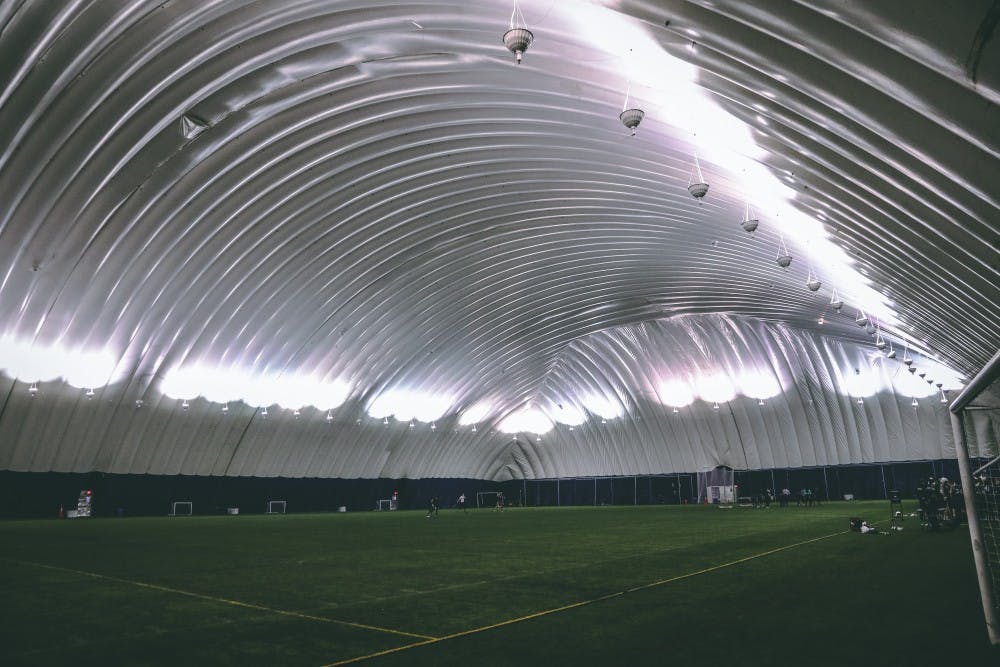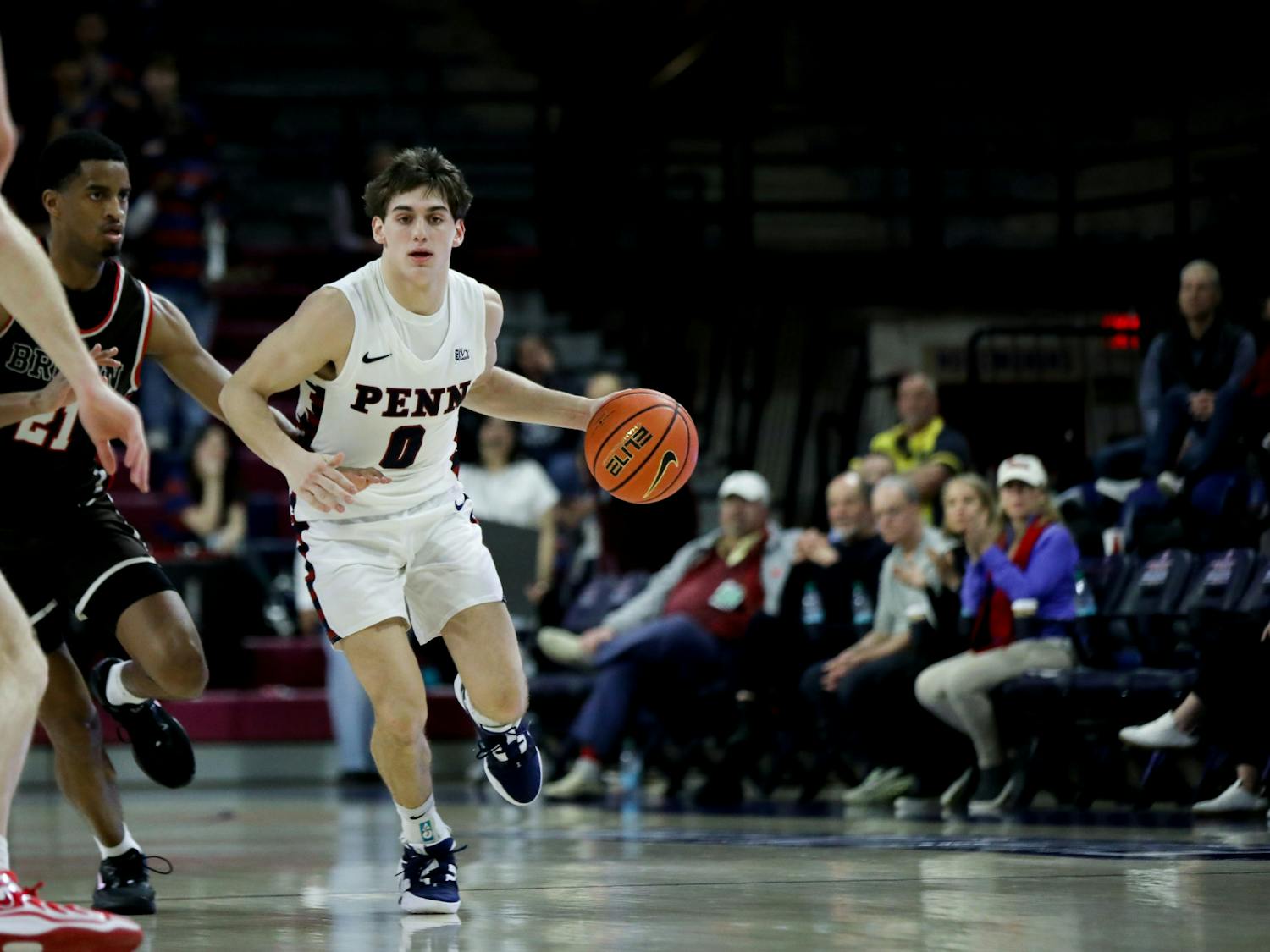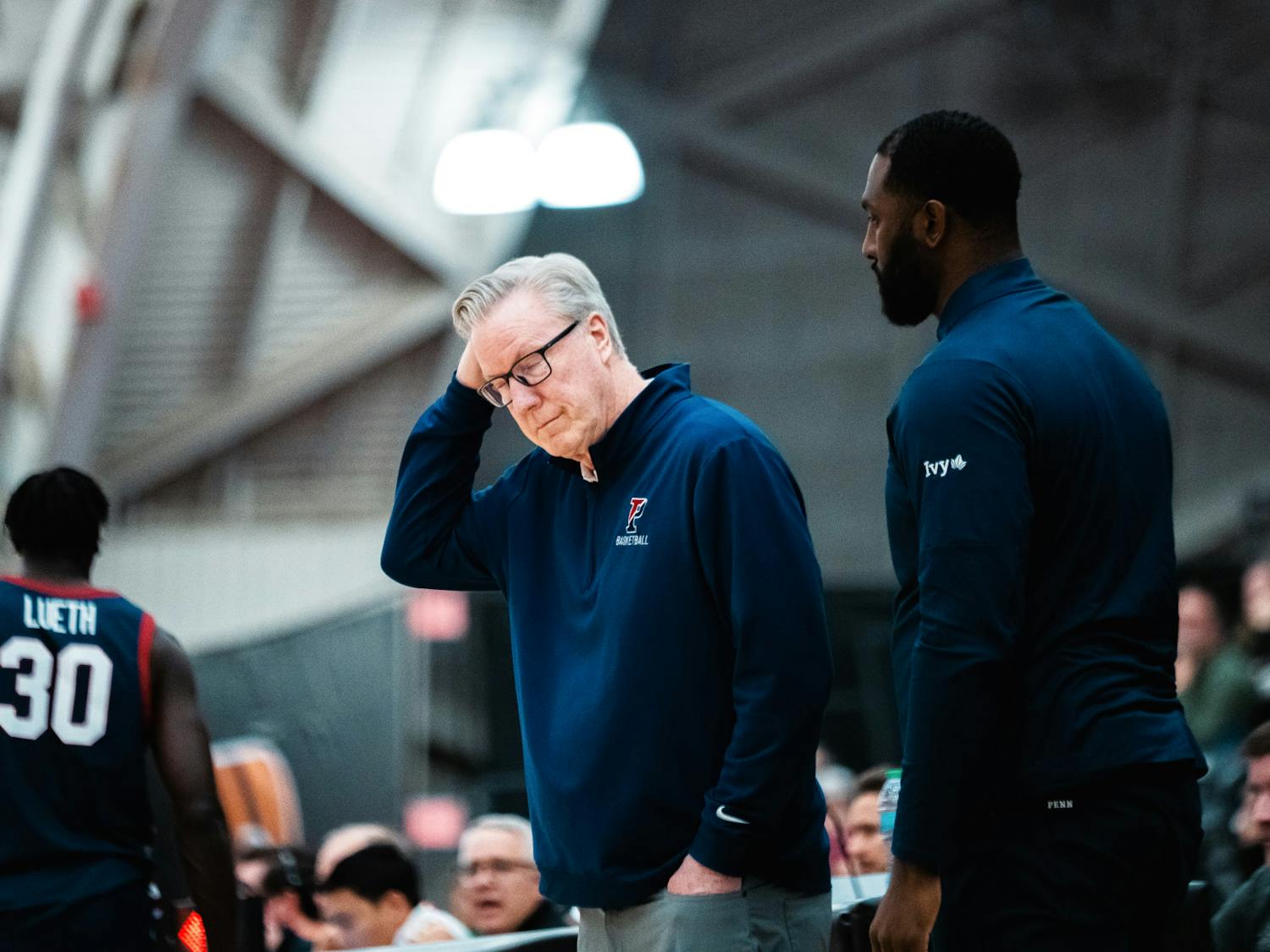During the late fall or early winter each year, one of Penn Park’s two turf fields seemingly disappears. While the James F. “Ace” Adams Field remains usable and visible to the average Penn student, Dunning-Cohen Champions Field becomes enveloped in a colossal white structure known as "the Bubble.”
For many Penn students, the Bubble, or the “seasonal air structure” as it is described on the Penn Facilities website, is a mysterious, largely inaccessible dome. While varsity and club athletes alike utilize the Bubble to practice during the winter, most students are left to wonder about its contents.
A tour inside the Bubble led by Ian Lencicki, the building manager for Penn Athletics, revealed a well-lit, well-equipped structure with ample space for the Quakers’ athletic programs to conduct full practices during the freezing weather. With amenities such as soccer goals, lacrosse goals, netting, and batting cages, as well as electricity and controlled climate, the Bubble serves as an ideal place for teams that would otherwise be completely weather-dependent.
“From the time it goes up until the time it goes down, it’s utilized morning, noon, and night from 5:30 or 6:00 in the morning to sometimes 2:00 in the morning, with rental groups on the weekends," Lencicki said. “We don’t have an indoor training space inside a field house or anything, so the Bubble gives our teams like baseball, softball, and lacrosse scrimmage advantages in the winter and early spring.”
A group of 40 to 50 electricians, groundsmen, and Penn Facilities managers orchestrate and conduct the installation and takedown of this massive structure. The process, as one might imagine, is complex and demanding.

The Bubble is usually erected around a week or two before Thanksgiving, and that process, according to Lencicki, can take up to three weeks.
“Typically around [late November], the soccer seasons are coming to an end, so there’s more field availability," Lencicki said. "You’re not overlapping between soccer practices, lacrosse practices, and other field rentals.”
RELATED:
Here's how Penn track's outdoor season is different from its indoor one
What's it like for non-basketball athletes to play in the Cathedral of Basketball?
When first installed, the Bubble is totally bare and dark, with the lighting, electricity, security cameras, and then eventually the sporting equipment added in the following days.
The takedown process, although a much quicker process at only three or four days, can often be more complicated than installation, especially in terms of timing.
“We do takedown in late March, hopefully before or after any bad weather has rolled in,” Lencicki said. “We take it down allowing for rainy days because you can’t roll it up wet, or else it could get moldy, or dingy, or smelly. We need a really solid weather window, but we have to be careful not to run into Penn Relays, Spring Fling, and the other events that need these fields in the spring. It’s a really tight window.”
Still, despite the potential complications, the Bubble has proven itself to be a useful resource not only for Penn’s varsity and club programs but also for some other well-known teams.
According to Lencicki, the Bubble has housed the Philadelphia Union of the MLS, the Philadelphia Eagles of the NFL, and the United States Women’s National Soccer Team, among others, demonstrating a value that not only aids but also transcends Penn Athletics, a value that more than justifies the work that so many people do to make it possible.
A previous version of this article incorrectly spelled 'Lencicki.' The DP regrets the error.









